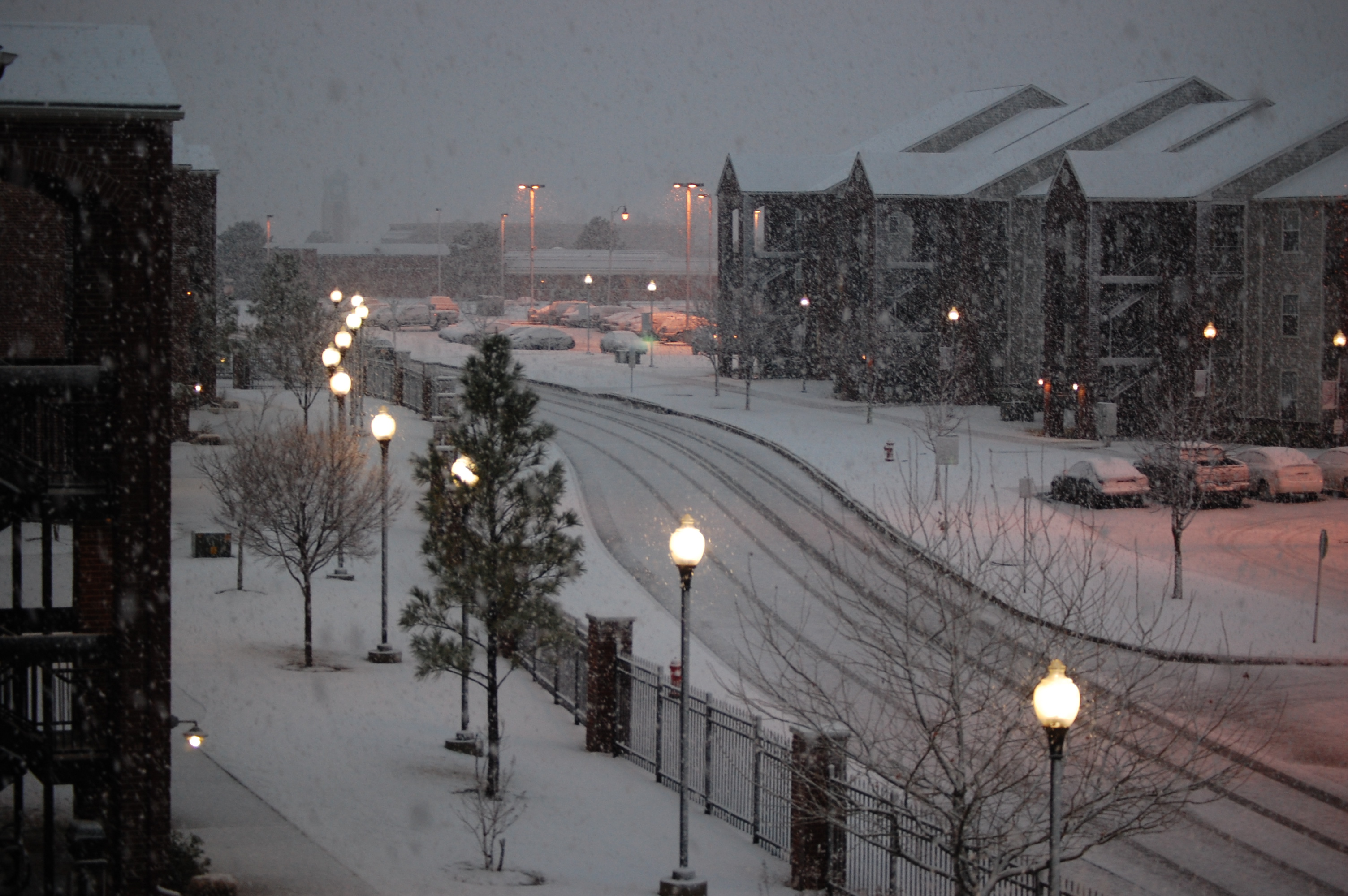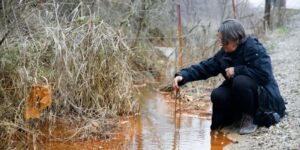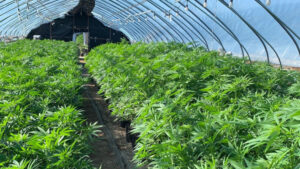A frigid Arctic front has hit Oklahoma causing (a) record low temperatures; (b) heavy snowfall; (c) power outages; (d) travel problems; (e) a disruption of campus life; (f) concern for the animal population on campus; (g) possible escalation of COVID-19.
Record Low Temperatures
Oklahoma and many other states in the Midwest are experiencing a winter storm like no other. It is being called the coldest outbreak in the southern plains for over 30 years.
According to the Weather Channel, the winter storm rolling through Kansas, Oklahoma and now Texas is shattering records which have not been touched in over 30 years. Oklahoma City has been below 20 degrees for five straight days and counting with some parts reaching record-low temperatures well into the negatives.
“A prolonged arctic outbreak that is smashing records in the Plains and Midwest may linger into much of the rest of this week before finally easing by early next week,” the Weather Channel said.
For the first time ever, all 254 Texas counties are under a winter storm warning. Oklahoma has also entered into a winter storm warning, as temperatures have reached levels unheard of in the area. The harsh temperatures have forced many to stay in their homes since it is dangerous to be outside.
This same storm is currently sending Oklahomans into a frigid spiral that is not going to slow down until at least the end of the week. However, the temperature alone is not the cause for concern. Wind chill creates a much more frigid environment, which can cause frostbite after long exposure.
According to the National Weather Service, wind chill of minus 25 degrees can cause frostbite in up to 15 minutes.
Heavy Snowfall
The freezing temperatures will also bring snow to many cities across Oklahoma. According to KFOR, the snowfall levels by Wednesday, Feb. 17 will rise to as high as 16 inches in Taloga and Arnett, 13 inches in Tulsa and Oklahoma City, 12 in Ardmore, and 15 in Woodward. Guymon and Beaver both are expected to receive 7 inches. Although these levels are high, they are not yet close to Oklahoma’s record of 14.1 inches on Christmas day in 2009. However, they are still dangerous for travel and power.
Power Outages
Another effect of such temperatures is more economic in nature. The colder the incoming weather, the hotter people set their heaters, which may be set even higher if there is a risk of a power outage.
According to NowPower’s article over winter power outages, people don’t think much about it when the heating is working, but a blast of cold can quickly drop the temperature 5 to 10 degrees with no easy way to get that heat back.
All of this amounts to a surge in energy demand
Preparing for that surge was part of the reason behind an email received by residents of Oklahoma Christian University, notifying them of possible “hour long planned power outages across Oklahoma City to conserve energy.”
Chief Student Life Officer at Oklahoma Christian, Neil Arter, gave a warning to students through school email.
“So, make plans now (charge your phone and computer, have some blankets ready),” Arter said.
Travel Problems
Oklahoma’s frigid February weather also contributes to dangerous transportation concerns. Denton David, a junior at Oklahoma Christian and an Edmond native, lives off campus and regularly drives to campus for class and work. With the recent snow totals and the negative temperatures, that was put to a halt. Currently, he spends his days at home, occasionally walking to the gas station across the street.
While many people already work from home, David typically has to travel around town, or even out of state for work. David works for a faith-based outdoors show called Final Descent Outdoors.
“Just last week, I was in the Senora desert for work,” David said in an interview. “While we were there, the coldest it got was in the upper thirties, so this weather is a crazy feeling.”
David also works as an event technician at Oklahoma Christian, and he has not been able to travel to the school for work of any sort because of the weather and campus closures. This means that he just attends school online like everyone else and then finds things to do at home to keep him busy.
“It is like we are back in April and not allowed to leave our houses,” David said. “Everyone is going insane in my house.”
For many students like him, their whole lives are back on pause because this weather has cut off their ability to travel to their job sites.
Disruption of Classes
The dangerous conditions inherent to such low temperatures have forced many classes to go online for the time being. Students at high schools and universities both have faced school cancellations due to the conditions of the roads and sidewalks. This further hinders the learning experience of students as the pandemic has already cut their semester short by a few weeks.
“I prefer to learn in person, that’s just how I learn best,” said Andrew Clubb, a sophomore cyber security major at Oklahoma Christian. “Being put online is unfortunate, but it’s not the end of the world.”
Going online and spending a lot more time in their dorms may have positive and negative effects in regard to COVID-19. Such circumstances will limit the risk of people going out or doing much and reduce exposure risk by extent. However, being shut up inside dorms with our roommates offers far less opportunity to adequately social distance. A senior at Oklahoma Christian, Chad Blythe, said that despite the weather, classes are still continuing as planned.
“I think (the COVID-19 pandemic) played a big part in all of us (students) knowing how to do an online class,” Blythe said. “Normally we would have just gotten a day or two off of school when it snows, but now we don’t really miss anything since the classes are moved online.”
Oklahoma Christian’s Chief Student Life Officer has sent multiple emails to the students regarding safety.
“Please stay inside if you can, and please be extra careful if you need to get out for any reason,” Arter said.
However, a senior student, Sazuka Saito, said staying inside is not always possible.
“Although the campus is closed on Monday, I still had a project due Monday in which I needed to use a machine in a classroom in Garvey Center,” Saito said. “Since I don’t have a car, I had to walk outside to go to a classroom for my project.”
“It’s ridiculous,” said junior Chandler Farris when asked about the university’s handling of the blizzard. “They shouldn’t force students to stress and sacrifice bracing for it (the storm) to get worse, so they can stay on schedule.”
These remarks were echoed by Hunter Begin, a junior majoring in finance.
“There’s no need for classes to meet,” Begin said. “The fact that students are still worrying about waking up for class when they have to use real caution just to walk down the sidewalk, is absurd, especially since OU’s campus-wide closure.”
In response to the points raised by students, the university aims to remain on-track in its academic schedule and seems to find no credible reason to act differently.
Concern for the Animal Population
Students are not the only ones who face difficulties with the freezing temperatures. Within the past 5 years, Oklahoma Christian students living in the apartments on the east side of campus have been allowed to bring small animals and keep them as pets.
In an NPR article from 2018, Kim Smyth, a staff veterinarian with Petplan insurance, said, “Under 30 degrees, factoring in the wind chill, it’s not going to be safe for any dog to be outside for an extended period of time.”
With current weather temperatures in the negatives, there is a serious risk posed to the animals on campus. Many students have never seen snow at this magnitude, let alone experienced temperatures this cold, so caring for their pets will become a challenge as they learn how to care for themselves, as well. With the possibility of rolling blackouts to begin, if the weather does not get better, these pets can easily be impacted by this cold weather in a negative way.
Possible Escalation of COVID-19
Being cooped up inside also poses a risk for exposure to COVID-19. Since everyone is restricted from continuing work or school, there is more time to gather with friends and family. However, these gatherings often happen without masks.
“The restrictions haven’t changed but have become harder to endure. I think everyone is tired of masks and now the weather has put everyone in a spiral,” Sophomore Joey Stofer said. “But honestly, I see more masks now because the weather is so cold. They are keeping people warm when outside, but when inside I feel like people are just done.”
COVID-19 testing has been canceled for the time being, although the Head of the Oklahoma Christian COVID taskforce, Jeff McCormack, has announced Oklahoma Christian will continue to test individuals who show the classic symptoms of COVID-19 during these times.















It’s crazy to think we’ve been dealing with this pandemic for long enough that we all know what is meant by ‘classic’ symptoms. I don’t think 2020 or 21 are going to fade from memory anytime soon.